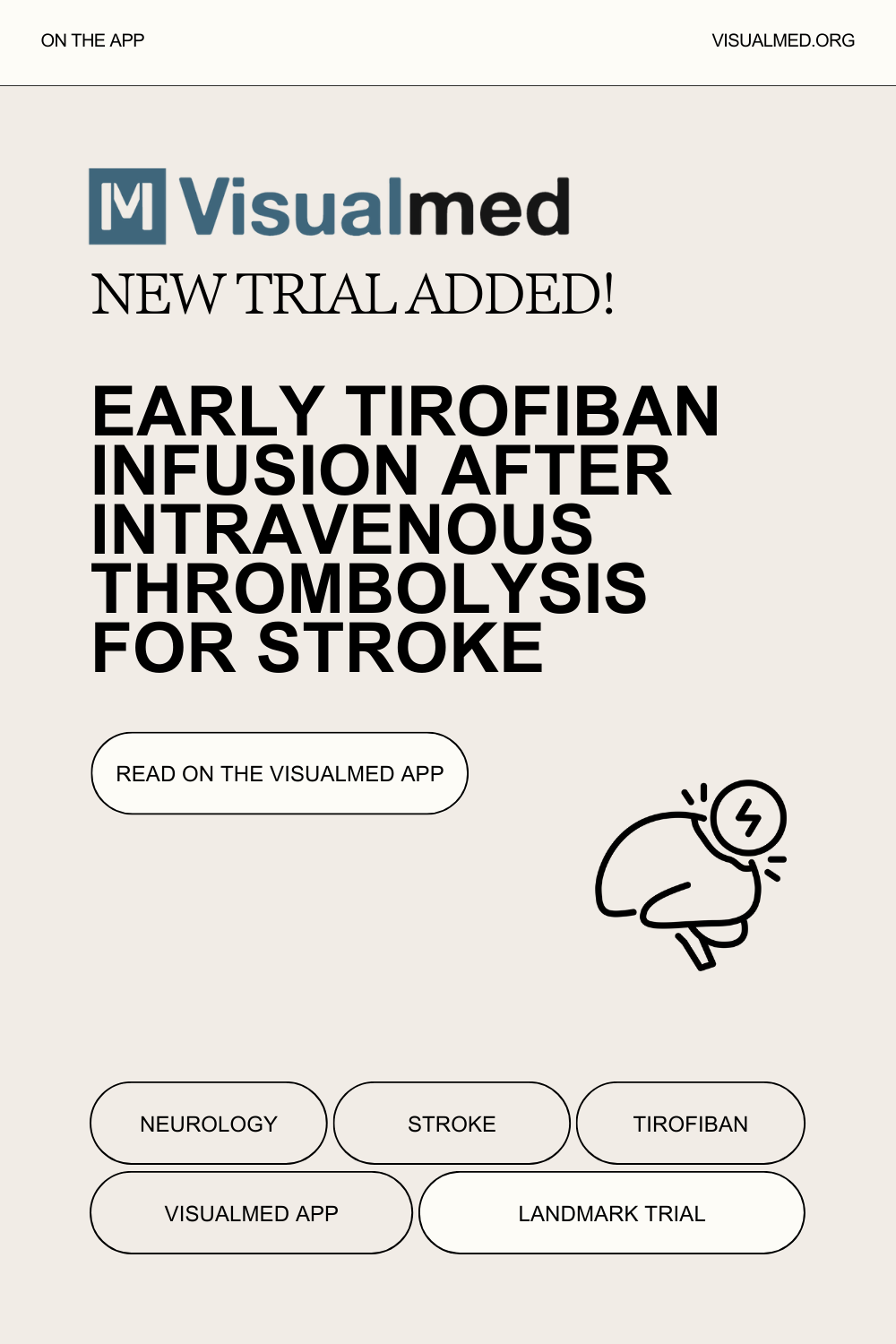
The 2025 ASSET-IT trial investigated whether early intravenous infusion of tirofiban, an antiplatelet agent, following intravenous thrombolysis could improve outcomes in patients with acute noncardioembolic ischemic stroke who are not eligible for thrombectomy. This phase 3, double-blind, randomized, placebo-controlled study enrolled 832 patients within 4.5 hours of stroke onset. All participants had a National Institutes of Health Stroke Scale (NIHSS) score between 4 and 25 and were ineligible for mechanical thrombectomy.
Participants were randomized to receive either tirofiban (n = 414) or placebo (n = 418) after thrombolysis. The primary endpoint was achieving an excellent functional outcome at 90 days, defined as a modified Rankin Scale (mRS) score of 0–1.
Results showed a significantly higher proportion of patients in the tirofiban group achieved excellent functional outcomes compared to placebo (65.9% vs. 54.9%). This corresponded to a risk ratio of 1.20 (95% CI, 1.07 to 1.34; P = 0.001). However, there was a slightly increased risk of symptomatic intracranial hemorrhage in the tirofiban group (1.7% vs. 0%) and a comparable 90-day mortality rate between groups (4.1% vs. 3.8%).
In conclusion, early administration of tirofiban following thrombolysis significantly improved functional recovery in patients with acute ischemic noncardioembolic stroke, with only a small increase in bleeding risk. These findings suggest tirofiban may offer a valuable therapeutic option in carefully selected patients who are not candidates for endovascular therapy. Source